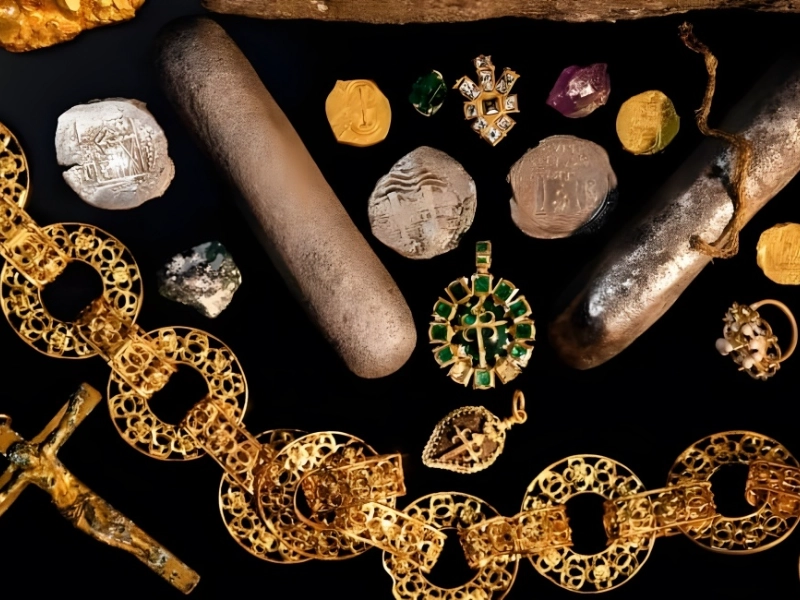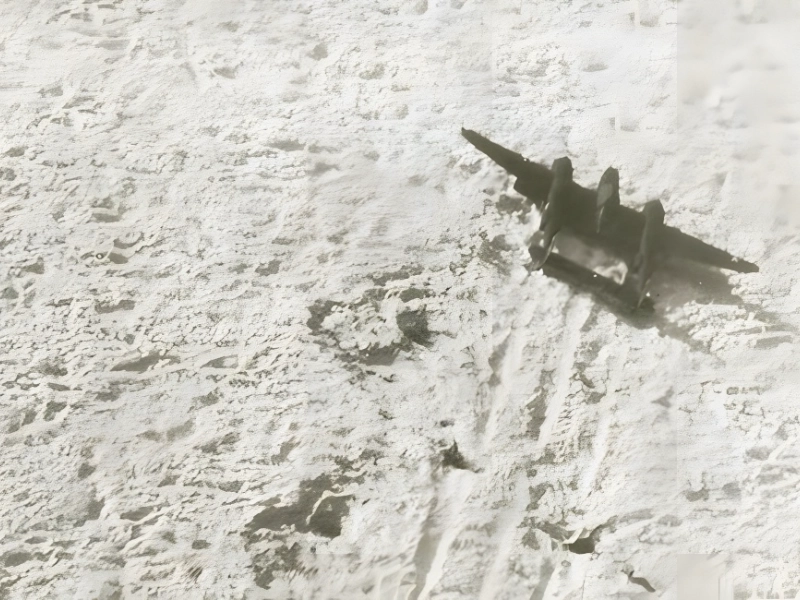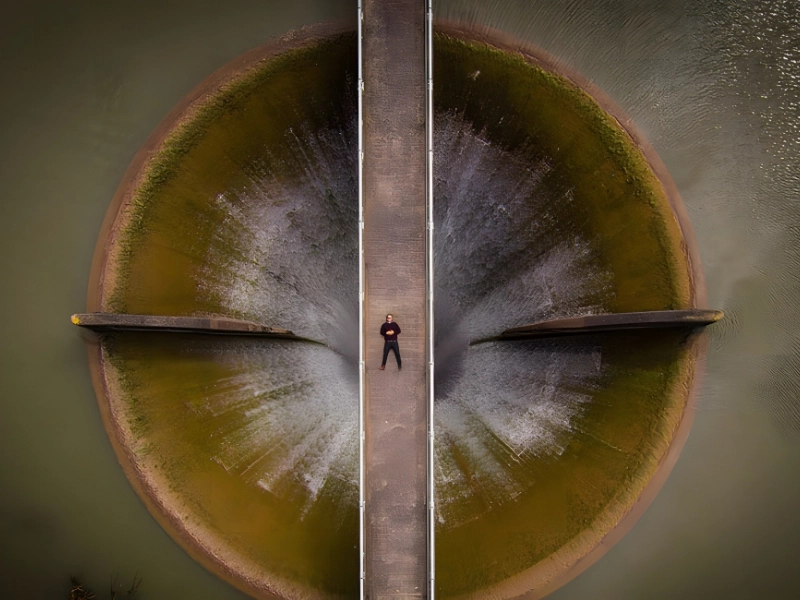Bizarre Finds in the Least Expected Locations: Unveiling the Unbelievable!
Advertisement
8. A Haul of Treasures rescued from the Bahamas' 366-year-old shipwreck
Place: Bahamas
The year this treasure was found was 2022.
Value Estimate: *Total Shipwreck Estimate: $1.6 billion
The quantity of gold and priceless jewels that have been discovered at shipwreck sites over the years is astounding. At the location of the Nuestra Senora de las Maravillas, a 366-year-old shipwreck located 43 miles off the coast of the Bahamas, a treasure trove was found in 2022.

Advertisement
A 366-year-old shipwreck in the Bahamas yielded a treasure trove that was discovered @ahglanton/Pinterest
When Maravillas made a navigational error and collided with another vessel, it was sailing from Spain to Colombia. The wreckage is currently dispersed throughout the ocean floor, and the impact was catastrophic. The finding of this new treasure is intriguing for experts, even if the $1.6 billion shipwreck has had its riches taken over the years. When Maravillas finally met its watery end, it had 3.5 million pieces of treasure on board.
9. WWII P-38 Found in Greenland Beneath 300 Feet of Ice
Where: The Greenland Ice Sheets
Years Found: 1992, 2018
Estimated worth: $1.75 million*
While battling for the Allies in the British Isles in July 1942, a fleet of P-38 Lightning fighter planes and two B-17 bombers encountered a severe blizzard. The pilots of the airplane made an emergency landing in Greenland. Thankfully, the crew was saved, but the planes were abandoned.

A World War II-era P-38 Lightning aircraft, part of the famed "Lost Squadron," was discovered beneath 300 feet of ice in Greenland, as reported by @best_at_travel on Twitter. The Lost Squadron refers to a group of six P-38 fighters and two B-17 bombers that were forced to make an emergency landing on the Greenland ice sheet in 1942 due to severe weather conditions and fuel shortages. Over the decades, these aircraft were buried and preserved by the constantly shifting and accumulating ice sheets, making their exact locations a mystery for many years.
In 1992, a significant breakthrough occurred when one of the P-38s was successfully recovered from its icy tomb. This aircraft, which had been meticulously covered by hundreds of feet of ice, was brought to the surface and remarkably restored to operational condition. The restored P-38 was aptly named "Glacier Girl," and its recovery became a symbol of perseverance and a testament to the durability of these historic aircraft. The successful restoration of Glacier Girl sparked renewed interest and enthusiasm among aviation historians and enthusiasts, encouraging further efforts to locate the remaining aircraft of the Lost Squadron.
The story took another exciting turn in 2018 when a second P-38 from the Lost Squadron was discovered. This discovery reignited hope and determination to uncover more of these historic planes, which hold significant historical and technological value. The ongoing search for the Lost Squadron not only aims to recover these remarkable machines but also to preserve and honor the legacy of the brave airmen who flew them during a critical period in history.
The tale of the Lost Squadron and the recovery of Glacier Girl serve as poignant reminders of the challenges faced during World War II and the incredible advances in aviation technology. These discoveries continue to inspire and captivate people around the world, highlighting the importance of preserving our shared history and the relentless human spirit in the face of adversity.
You May Like
Advertisement










